HUNTINGsmart! USA Knowledge Base
Module 10 - WILDLIFE
TURKEY
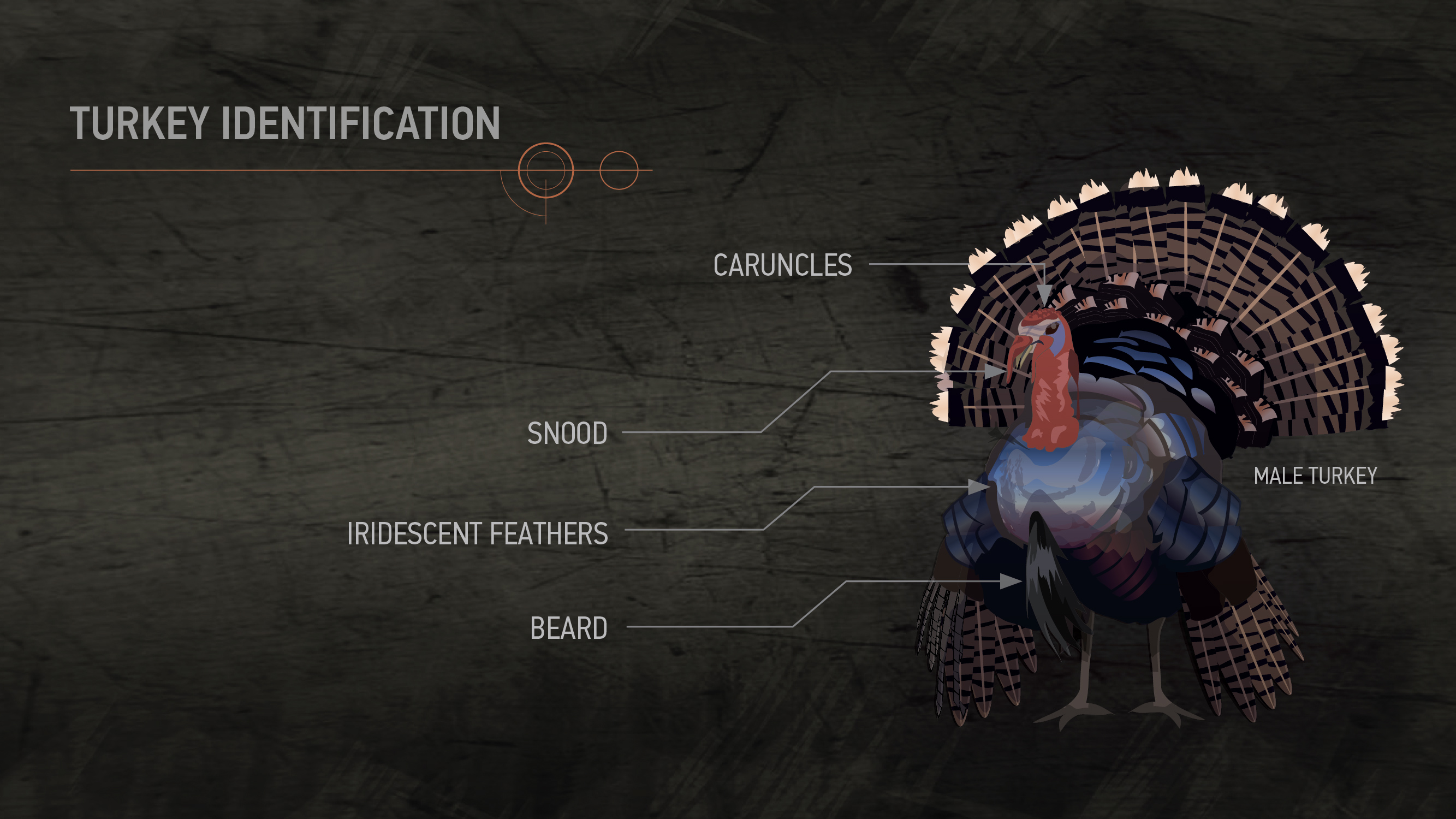
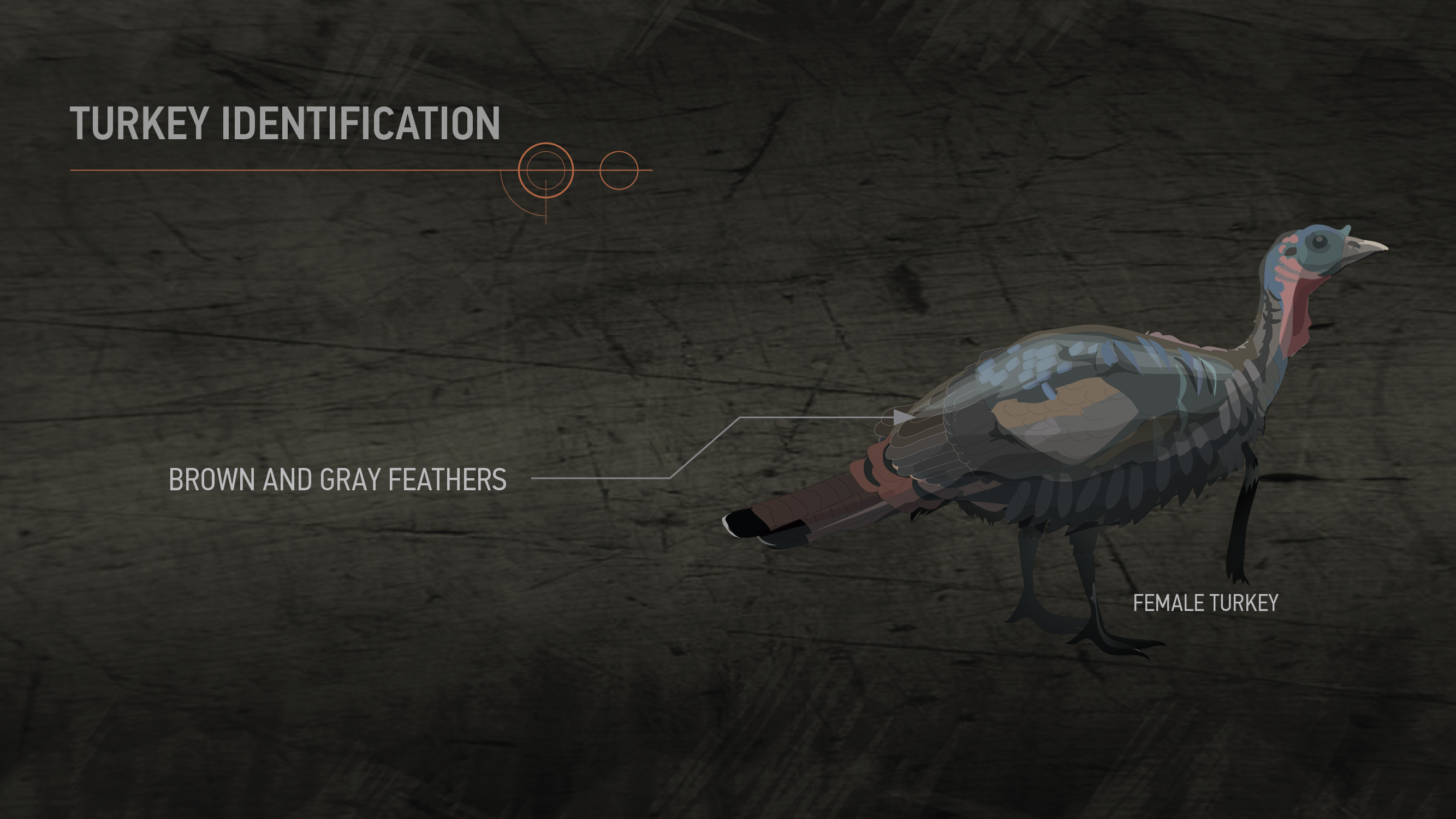
The largest game bird in North America, male turkeys (or ‘toms’) can weigh up to 24 pounds and have iridescent red, green copper, bronze and gold feathers that they use to attract the females with during mating season. They also have ‘beards’ (long hair-like feathers) that grow from the center of their chest and sharp spikes on the back of their legs. Female gobblers (called hens) are camouflaged to protect the nest—their brown and gray feathers make them harder to spot.
Turkey tracks look like three long, skinny fingers with a dot above each from the claw and a circle at the base. Additionally, all turkeys have ‘caruncels’ (lumpy, fleshy growths on their head) and ‘snoods’ (a fleshy flap that hangs out over their bill). Basically, if you see a big, ugly bird out there, it’s probably a turkey.
DIET

Wild turkeys are omnivores. They’ll eat nuts, fruits, seeds and acorns, but if the mood strikes them right, they’ll also nibble on insects and small amphibians. They wander and forage, scratching at the ground with their feet and pecking at their findings with their beak.
Turkeys can be pretty extreme animals—they don’t even chew on their food. They just swallow it whole and let their digestive tract do the work to break it down. Keep in mind that turkey meal time is usually during the three hours after dawn and the three hours before dusk, so make sure you’re out there before they are.
HABITAT
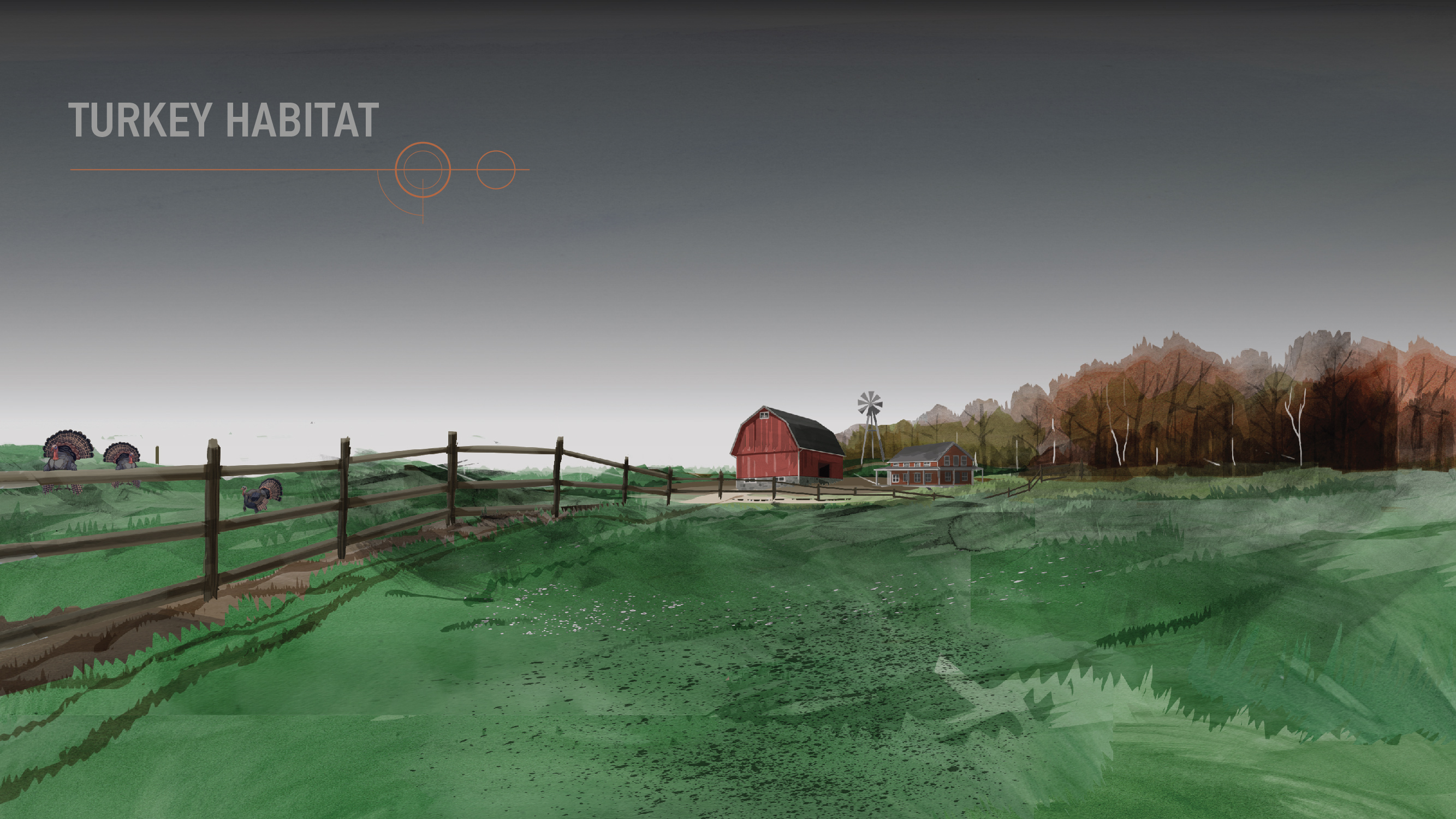
Turkey can be found pretty much everywhere, as long as there’s a water source nearby. They’ll be in forested areas, swamps, farmer’s fields and grassland areas. They nest in densely covered areas where the vegetation stands at least 3 feet tall. Hens prefer to hang out in fields where they can find food quickly and hide in the tall grasses. While turkeys tend to prefer forested areas, it’s not unusual to find turkeys in open areas because they like to be able to see up to 100 yards away.
SCAT

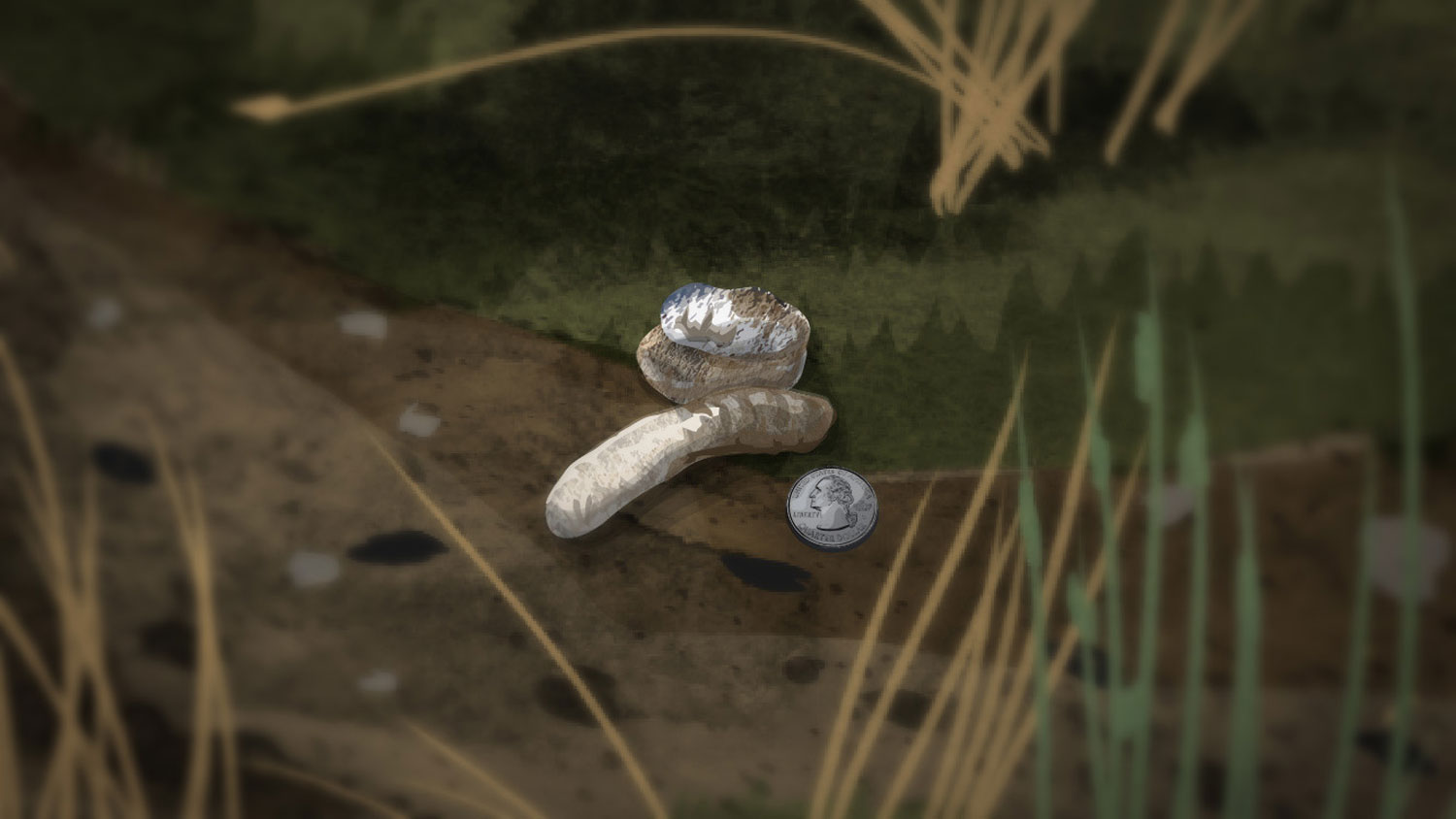
The droppings of a fully-grown turkey will be log-shaped and they can be up to 3 inches in length… seriously. Turkey scat will contain grasses and seeds and will be smaller for smaller turkeys. It will vary in color too, depending on what the bird has been eating: Basically, purple berries = purple scat. Track the bird to it’s food source based on what you find in the scat! Just don’t touch it with your hands—turkey droppings are full of bacteria. Poke around with a stick if you want to get a better look.
TURKEY CALLS
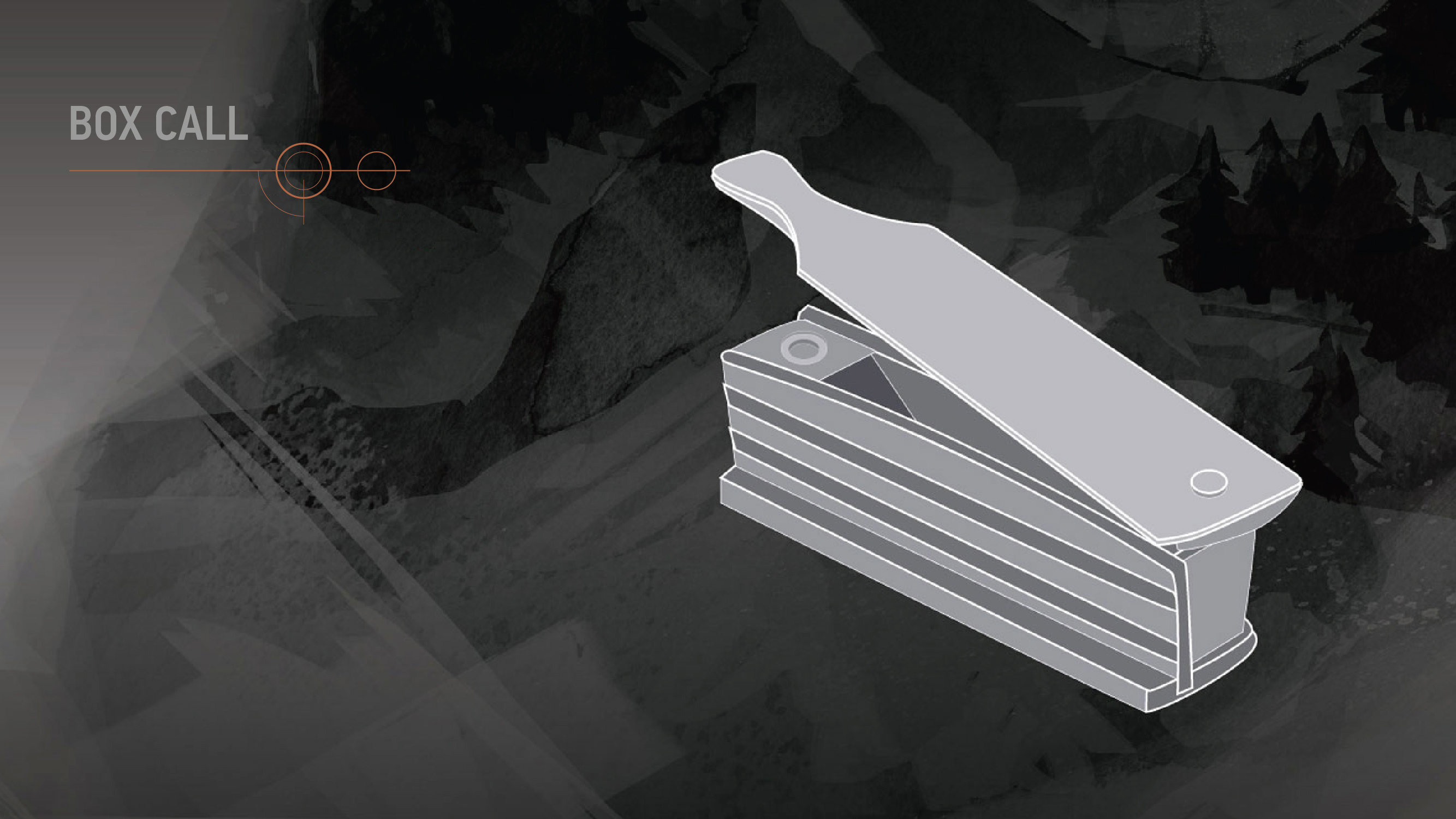
You need to be cagey when hunting wild turkey. Scout them out from your blind with binoculars first—they have insanely good hearing and their field of view covers 270 degrees. They will definitely spot you before you spot them. So, the trick is to disguise yourself and then bring them to you with your turkey-talk.
Turkey calling strategy hinges on the season you’re hunting in (i.e. spring vs. fall). Generally though, in either season you’ll be imitating the sounds of a hen because the ladylike yelping and clucking sounds will bring a curious ‘tom’ into your shooting range.
You also need to be aware of over-calling turkey. Be discreet! Make the birds curious; not cautious.
Your turkey call options are:
Box Calls:
- This type of call is ideal for new hunters because it’s relatively easy to get the hang of.
- Box calls have a wide sound range and with practice, you can actually make a variety of call types with them, including yelps, clucks, cuts and gobbles.
- If a box call gets wet it’s basically useless—this can be a huge disadvantage if you aren’t able to keep it dry during the hunt.
Mouth/Diaphragm Calls:
- Mouth/diaphragm calls take a little practice to master, but you can use them in any type of weather.
- They also offer a variety of volumes and pitches allowing you to control how loud your turkey call sounds.
Slate/Friction Calls:
- This is the easiest type of call to use and a great call for beginners to start with.
- It sounds very realistic.
- You should carry a few different types of these calls with you since different types will produce different sounds.
- This call type will require both of your hands to operate, so keep in mind, if you're using a slate call, you will NOT be able to hold onto your firearm at the same time.
Push-Pull Pin Friction Calls:
- This type of call is easy to use and can be very effective.
- They can be easily operated using one hand, but like the box call, they can be useless to you if you can’t keep them dry.
Turkey Calling Tip:
Turkey calling, no matter which call device you use, takes practice to get the hang of. Experiment with different call types to get a feel for which one will work best for you during a turkey hunt.
FIREARMS, Ammo & Your Target

Most turkey hunters use a 10 or 12-gauge shotgun with a tight choke. Shotshells used for turkey are usually 3-3½-inch magnums and the shot size should be No. 4, 5 or 6.
VITAL ZONES
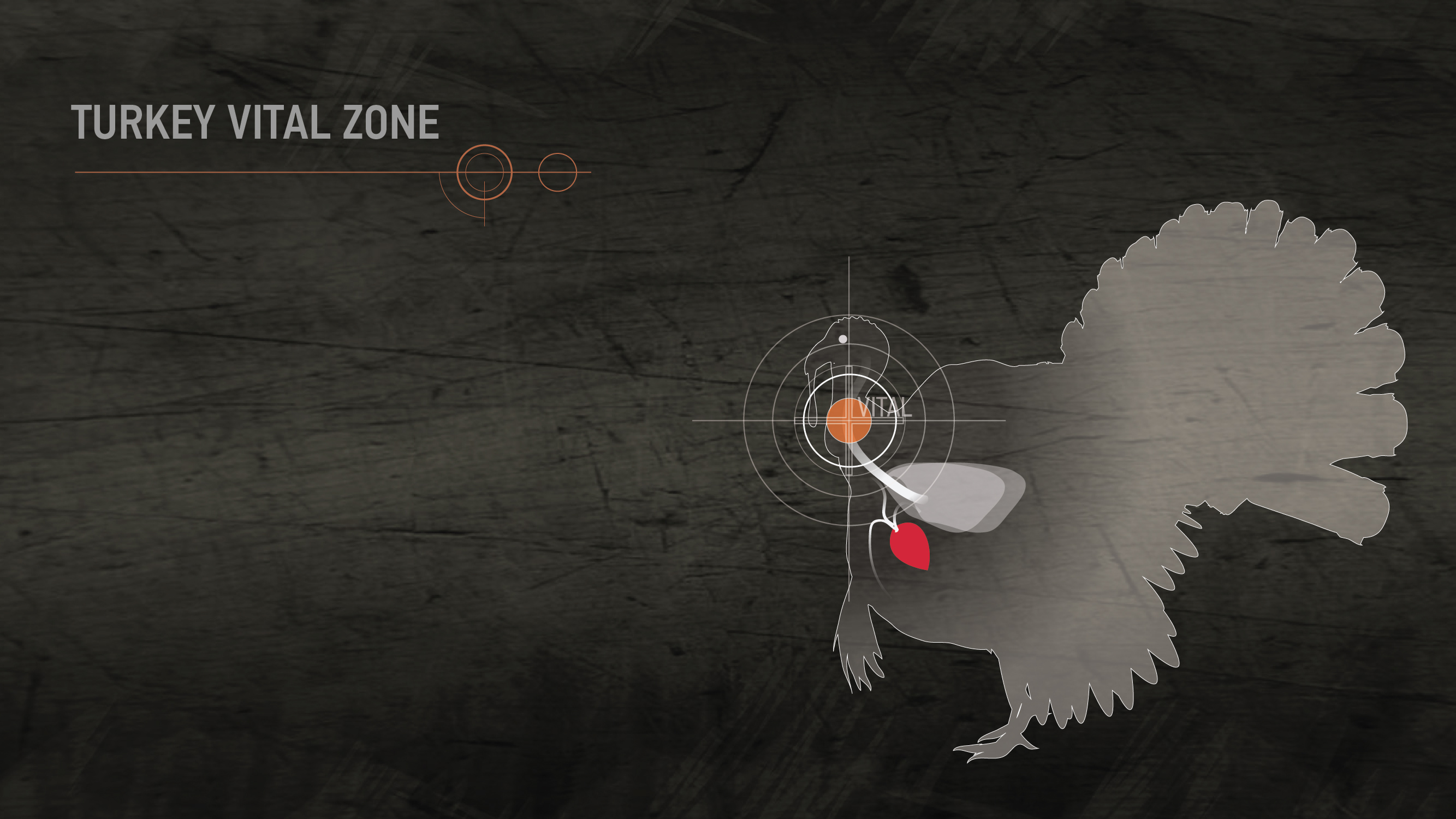
The only way to kill a turkey quickly without injuring it is to aim for it’s exposed head and neck and to hit that specific area with at least 8-10 shot pellets. That’s why turkey hunters use a tighter choke—to produce a tighter pellet pattern.
Be careful when approaching a downed turkey. If it’s a male, make sure he’s dead before getting too close, because he’ll likely be swinging the sharp spikes on the back of his legs.
Turkey Hunting Tip:
Wait to shoot a turkey until the bird is standing still. When strutting around, a turkey will fold its neck back, which hides the majority of the vital zone area. So, if your tom is really putting on a show for the girls and he won't stand still, try throwing him a ‘cluck’ with your turkey call. He’ll stop in his tracks and stretch himself out while he looks around for the source of the sound. The stretching moment will expose the vital zone and be your best shot opportunity.



